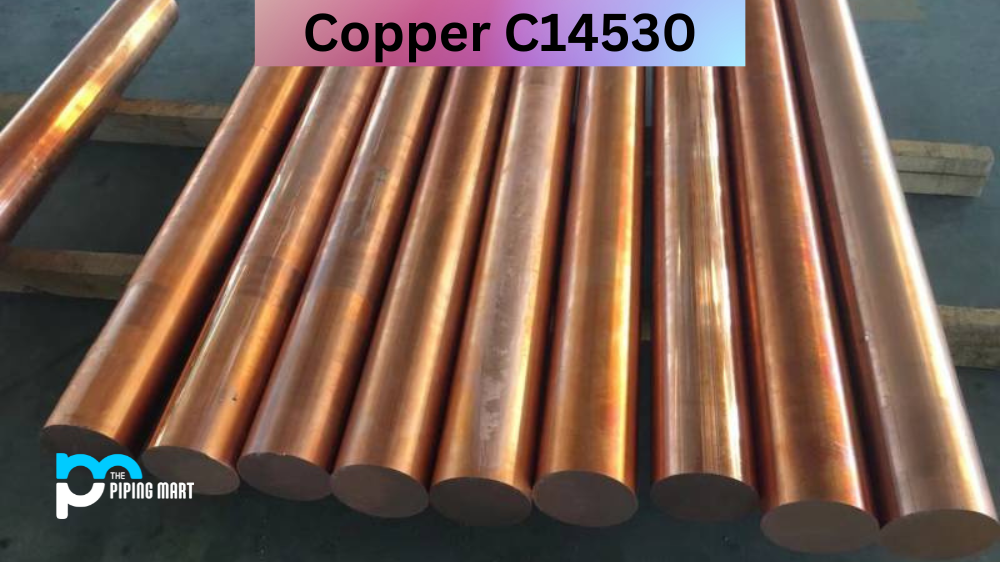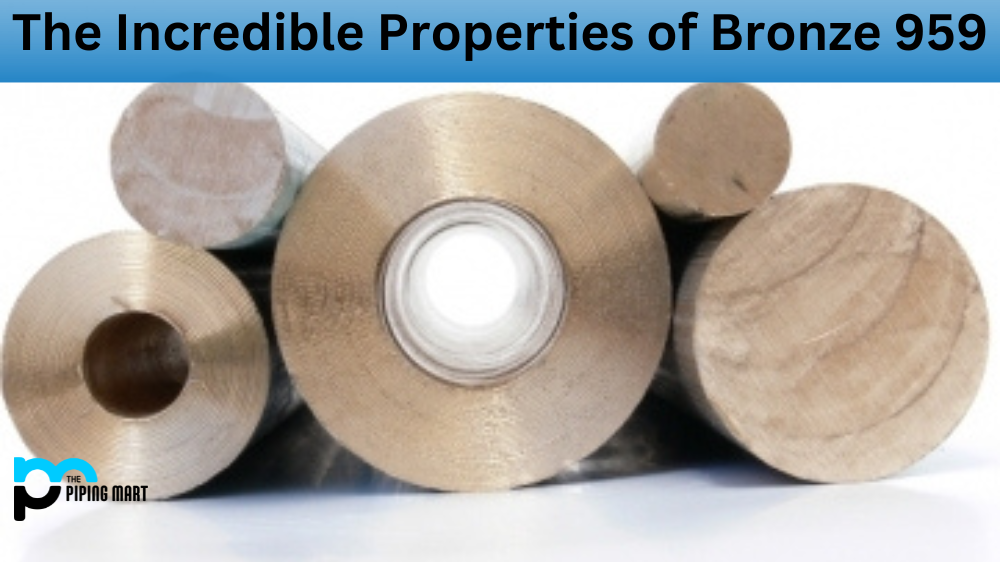Copper C14530 is an alloy of copper and other metals that has a wide range of uses. From aerospace to automotive, this alloy has become the go-to choice for many industries because of its strength, durability, and corrosion resistance. But before you decide to use it, it’s important to understand exactly what this alloy is made of and how it can be used in your applications. Let’s dive into the specifics of copper C14530.
C14530 Composition
Cu C14530 is composed primarily of copper but also includes a small selection of other materials such as nickel, iron, manganese, and zinc. The exact composition varies depending on the manufacturer and application but typically ranges between 88%-92% copper, 5%-7% nickel, 2%-4% iron, 1%-2% manganese, and 0.5%-1% zinc. This particular combination gives the alloy its unique characteristics and properties.
| Element | Content (%) |
|---|---|
| Copper, Cu + Silver, Ag + Phosphorous, P | Balance |
| Tin, Sn | 0.003 – 0.022 |
| Tellurium, Te | 0.003 – 0.022 |
C14530 Physical Properties
The physical properties of copper alloy C14530 are extraordinary. It has high electrical and thermal conductivity, as well as great formability and corrosion resistance. In addition, this C14530 alloy exhibits great strength and hardness even after severe deformation and thermal treatments for improved mechanical performance. Its tensile strength is in the range of 275-400 N/mm2, and its hardness ranges from 95-120 HB; both improve with age hardening. Copper alloy C14530 is extremely versatile and can be used anywhere that requires materials that can handle extreme temperatures or stress with little to no degradation in quality.
| Properties | Metric | Imperial |
|---|---|---|
| Density | 8.9 g/cm³ | 0.323 lb/in³ |
C14530 Mechanical Properties
Grade C14530 offers excellent mechanical properties that make it ideal for a variety of applications. It has a high tensile strength (up to 250 ksi), good ductility (up to 25%), and excellent fatigue resistance (up to 200 MPa). In addition to these mechanical properties, the alloy also offers good physical characteristics such as low thermal expansion (6 x 10-6/°C), good electrical conductivity (17%) and non-magnetic behaviour.
| Properties | Metric | Imperial |
|---|---|---|
| Tensile strength | 276 MPa | 40 ksi |
| Elongation | 5% | 5% |
C14530 Uses
The most common use for copper C14530 alloy is in aerospace components due to its excellent mechanical properties and corrosion resistance. The alloy is also used in automotive components such as engine blocks and exhaust systems due to its high heat resistance up to 400°C (752°F).
C14530 Equivalent
- ASTM B888
- B152
Corrosion Resistance
The material also offers excellent corrosion resistance when exposed to atmospheric conditions or saltwater environments, making it suitable for marine applications as well.
Heat Treatment
When manufacturing parts with copper C14530 it is important to consider the heat treatment process, which can significantly affect the mechanical properties of the material. Heating at temperatures between 600°C–800°C (1112°F–1472°F) can improve strength, while heating at temperatures above 900°C (1652°F) will reduce strength.
Machining
It is recommended that machining be done with standard cutting tools, as special tools are not necessary due to the relatively soft nature of copper alloys compared to steel alloys.
Welding
Due to its low melting point (~1000 °C / 1832 °F), welding with copper alloys can be tricky if you don’t have experience with them. However, there are a few methods that work well, including gas tungsten arc welding (GTAW) and shielded metal arc welding (SMAW). It is important that you practice proper safety precautions when welding with these materials as they produce hazardous fumes which must be properly ventilated or filtered out using protective equipment such as respirators or face shields.
Conclusion
Copper C14530 offers a wide range of advantages over other metals, including strength, durability, corrosion resistance, heat resistance up to 400 °C (752 °F), a low thermal expansion rate of 6 x 10-6/°C, the good electrical conductivity of 17%, non-magnetic behaviour, and ease in machining using standard cutting tools. Making sure you understand how this material behaves under different conditions will ensure your parts perform optimally in any environment they may encounter while still providing cost savings over other more expensive metals like titanium or stainless steel. With proper knowledge about its composition, mechanical properties, physical characteristics, uses corrosion resistance, heat treatment, machining, and welding processes, you can confidently incorporate Copper c14530 into your projects. Thank you for reading!

Abhishek is a seasoned blogger and industry expert, sharing his insights and knowledge on various topics. With his research, Abhishek offers valuable insights and tips for professionals and enthusiasts. Follow him for expert advice on the latest trends and developments in the metal industry.




